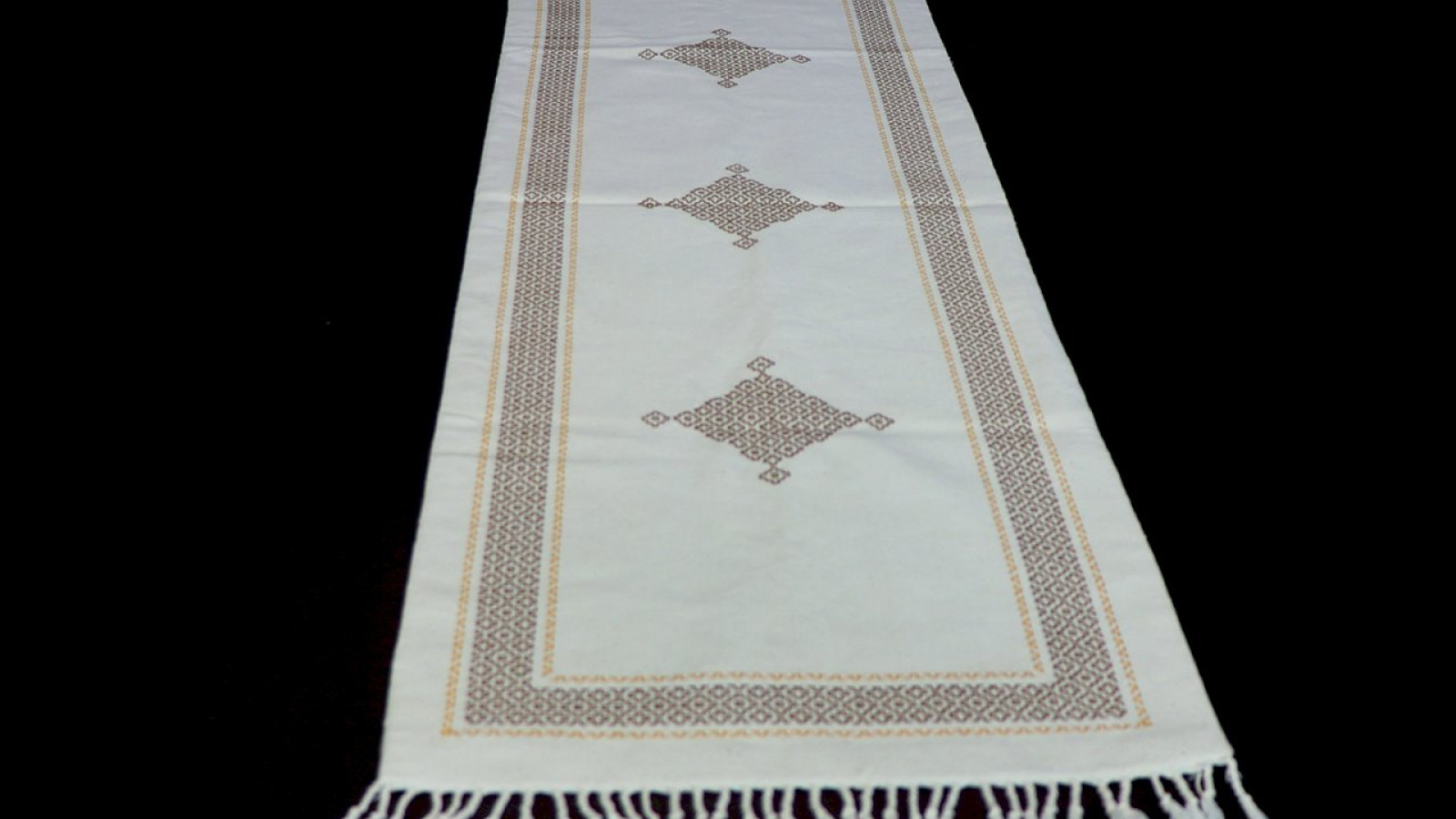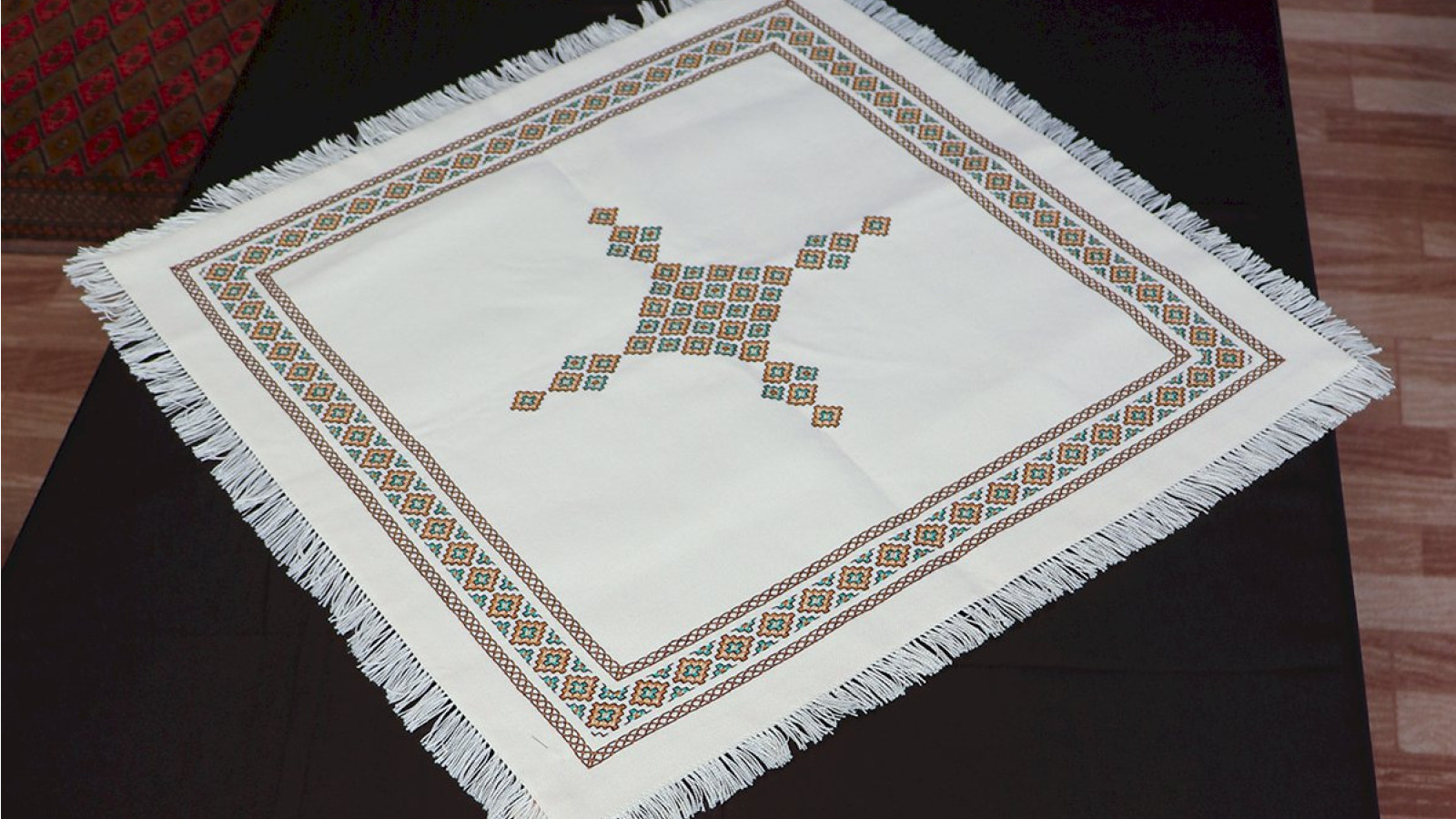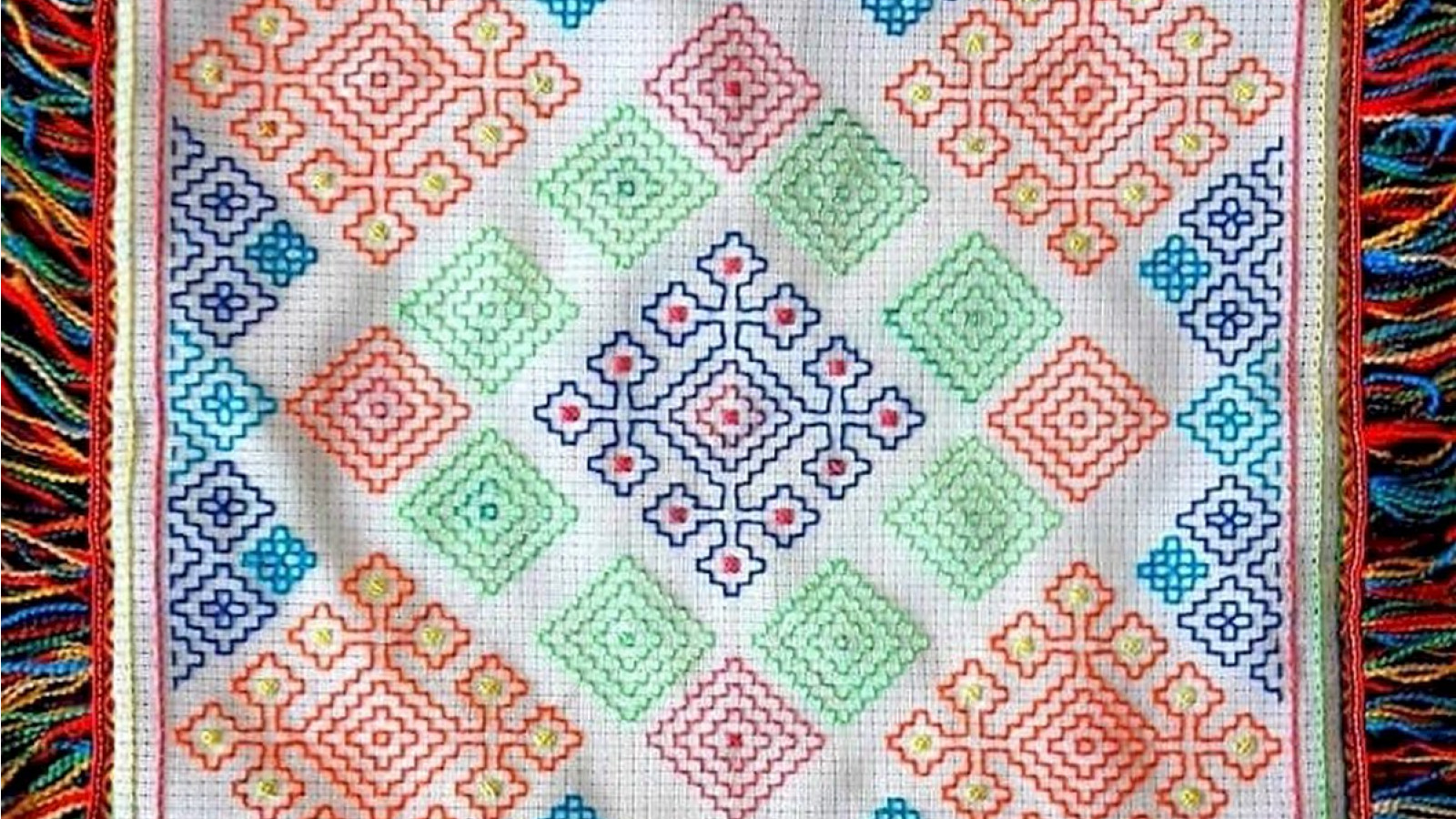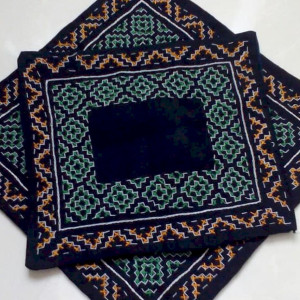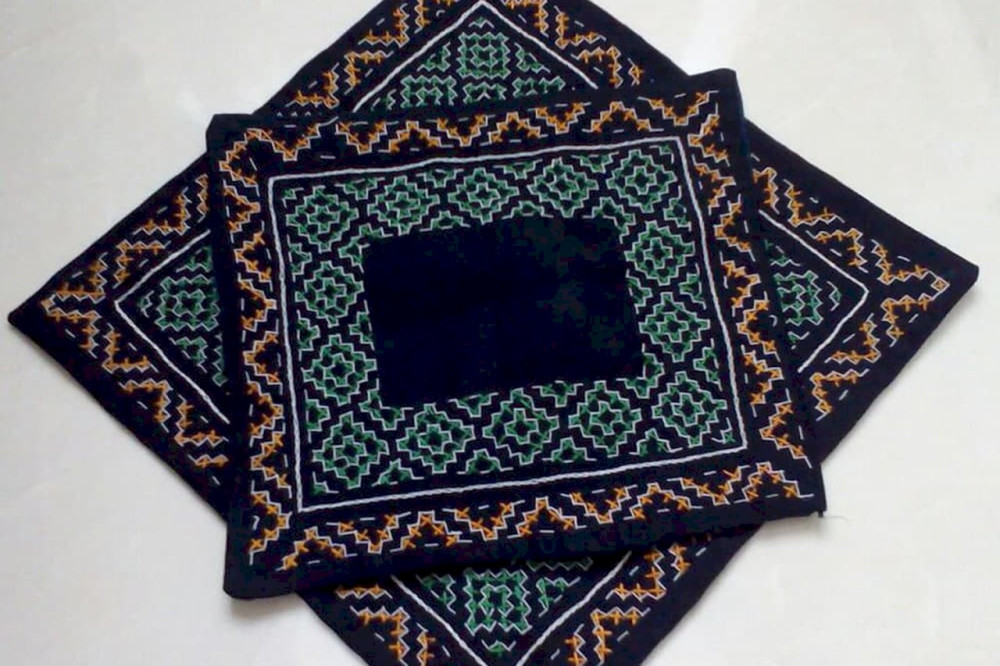
Tafreshi Duzi of Markazi
Formation of traditional embroidery in the city of Tafresh for the first time resulted in this new kind of handicraft to be known as “Tafreshi Duzi”. In the beginning, this beautiful and yet simple craft was applied to sew decorative patterns on the edges of clothing, but most importantly on cloaks or garments of the dervish, that is the reason Tafreshi is also known as “Darvishi Duzi”. In comparison with other embroideries “Suzan Duzi e Tafreshi” or Tafreshi needlework, which is the third name of this traditional and original Iranian embroidery, uses simple, generally geometric and not so elaborate but yet fascinating motifs which are mostly sewed in the forms of wide strips on the edges of the fabrics.
When making a Tafreshi, choosing the correct kind of fabric depends completely on the kind of its wraps and wefts, because needlework of this handicraft is done by counting the wraps and wefts and the further modifying texture of fabric. That is why artist women of Tafresh usually choose sack fabrics of which the wraps and wefts are quiet distinguishable. Except for this specification, artists of this area do not consider any other limitation. Most of the motifs applied in this handicraft are geometric and completely made from the imagination of their creators. “Amameh”, “Damseh” and silk yarns are used to make the stitches. The women wear thimbles to avoid injuries which are quite possible.
There are two major methods used in Tafreshi, one is based on counting the wraps and wefts which is followed by some rows of big stitches called “Shalal” that are made vertically and horizontally and creates “Kongerehi” or battlement patterns, and finally, chain stitches are applied. Then the first step and the chain stitches are repeated. In the second method, the wraps and wefts are counted and then the wraps are pulled regularly to make empty geometric spaces, then the spaces are filled with stitches of silk yarns and decorated with yarns of different colors. This kind of embroidery decorates edges of bundles, cushions, “Chador e Shab”, drapes and also scarves and skirts.
